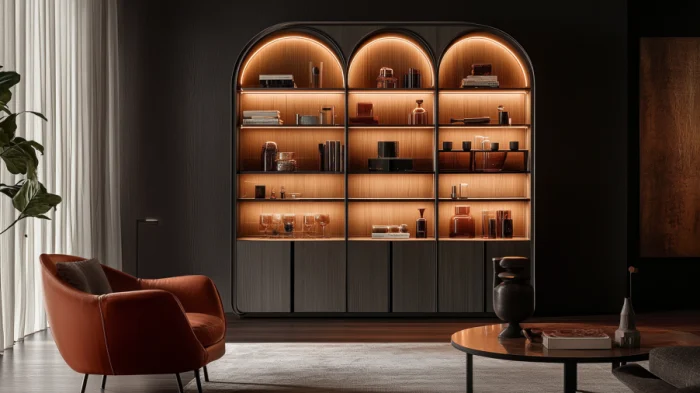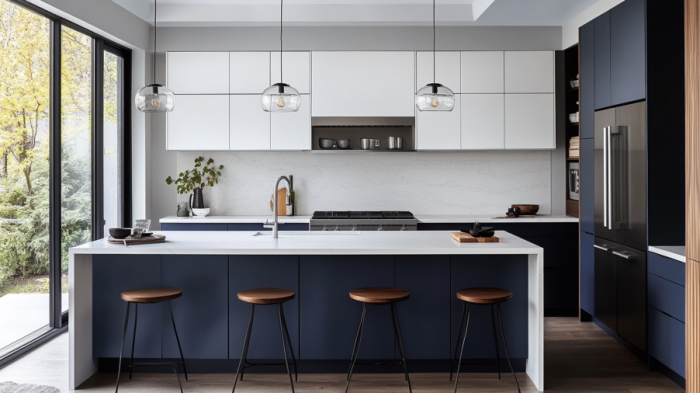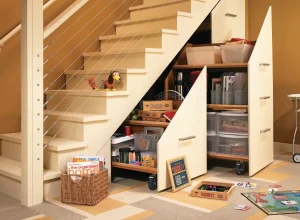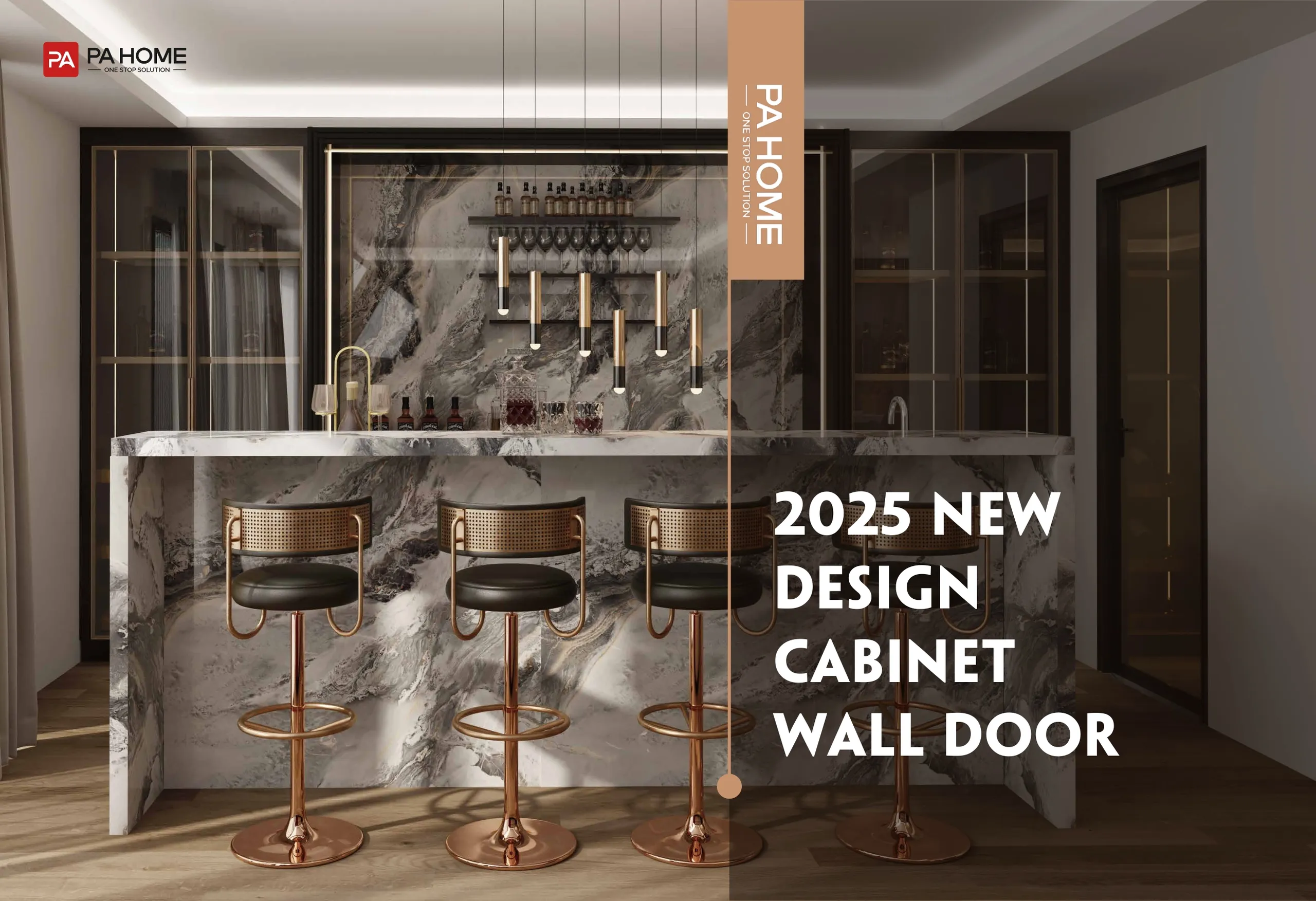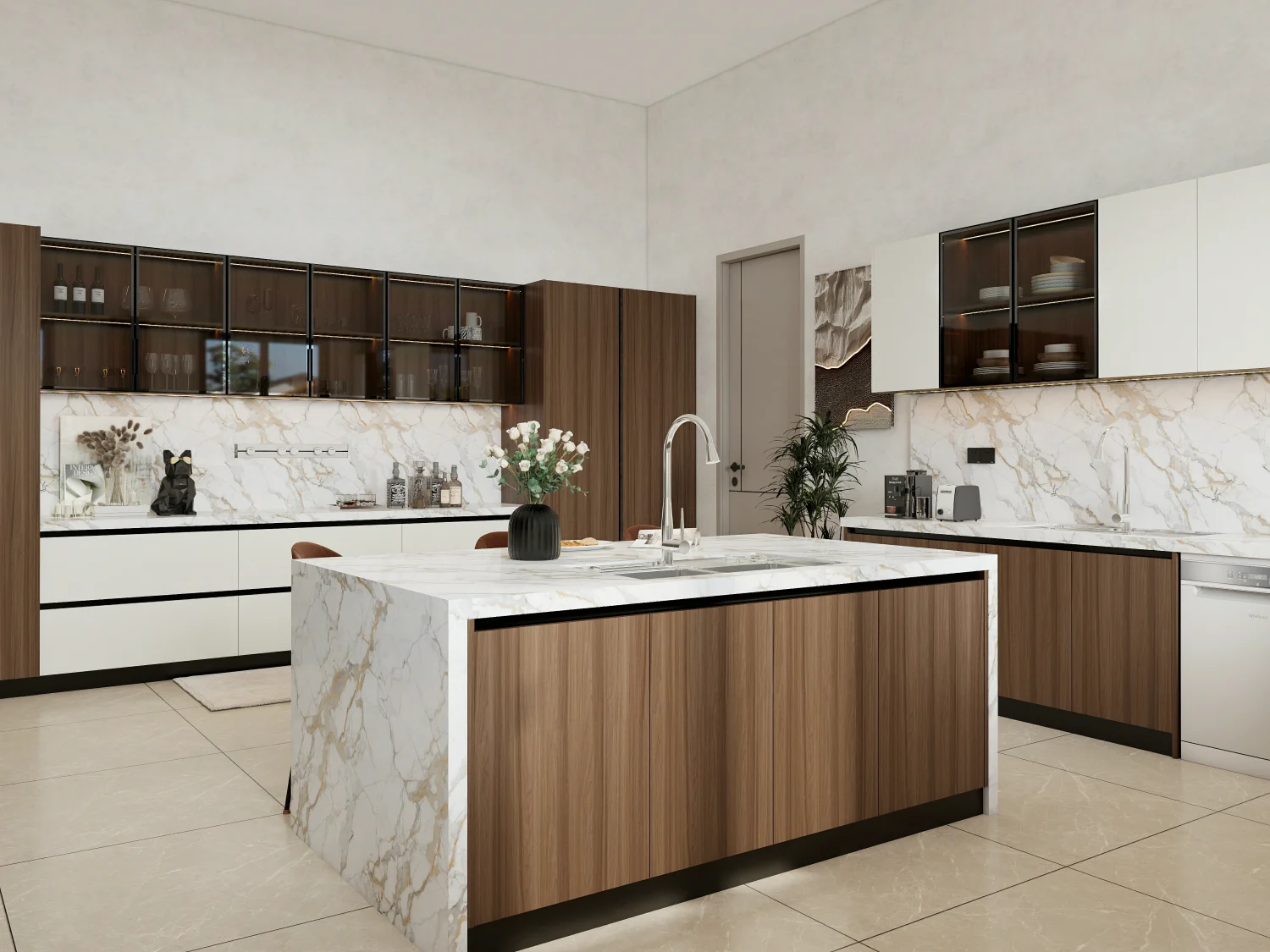
When renovating your kitchen, choosing the right cabinet material can feel like an overwhelming decision. The cabinet material affects your budget, the look of your space, and the durability of your kitchen’s most important feature. Laminate kitchen cabinets have grown in popularity due to their combination of affordability, variety, and functionality. But what makes laminate a great choice? In this article, we’ll dive into the advantages and disadvantages of laminate cabinets, so you can determine if they’re right for your kitchen.
What Are Laminate Kitchen Cabinets?
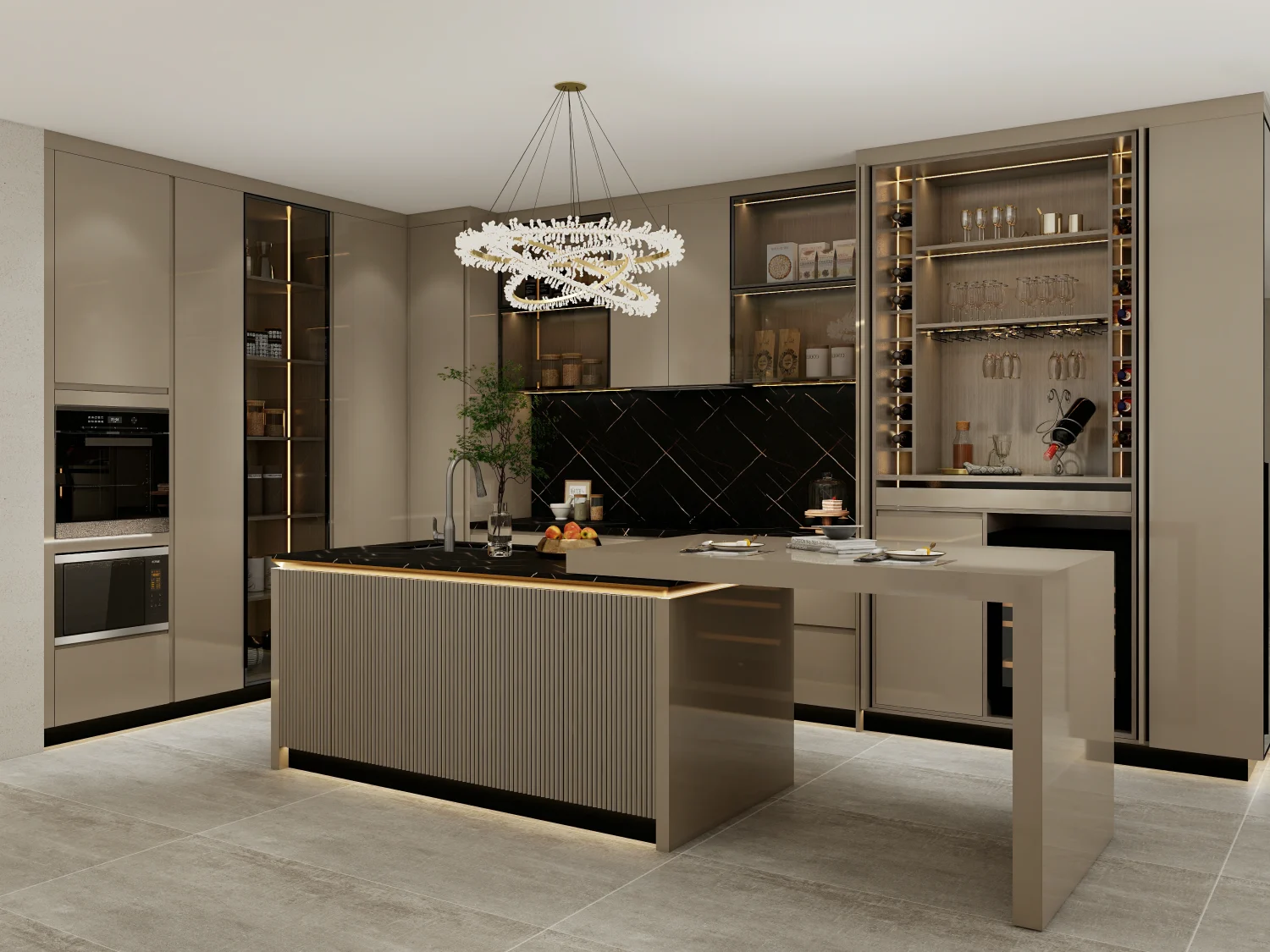
Laminate kitchen cabinets are made from layers of laminate material, typically a paper or vinyl that’s impregnated with resin, which is then bonded to a substrate like MDF (Medium Density Fiberboard) or particleboard. This gives the cabinets a smooth and durable surface available in an array of finishes, from matte to high-gloss.
Laminate cabinets are also available in various textures, colors, and patterns, including options that resemble natural wood, stone, or other premium materials. The layers of laminate are pressed together using high pressure, making the material resistant to moisture, heat, and physical wear.
What Are the Key Advantages of Laminate Cabinets?
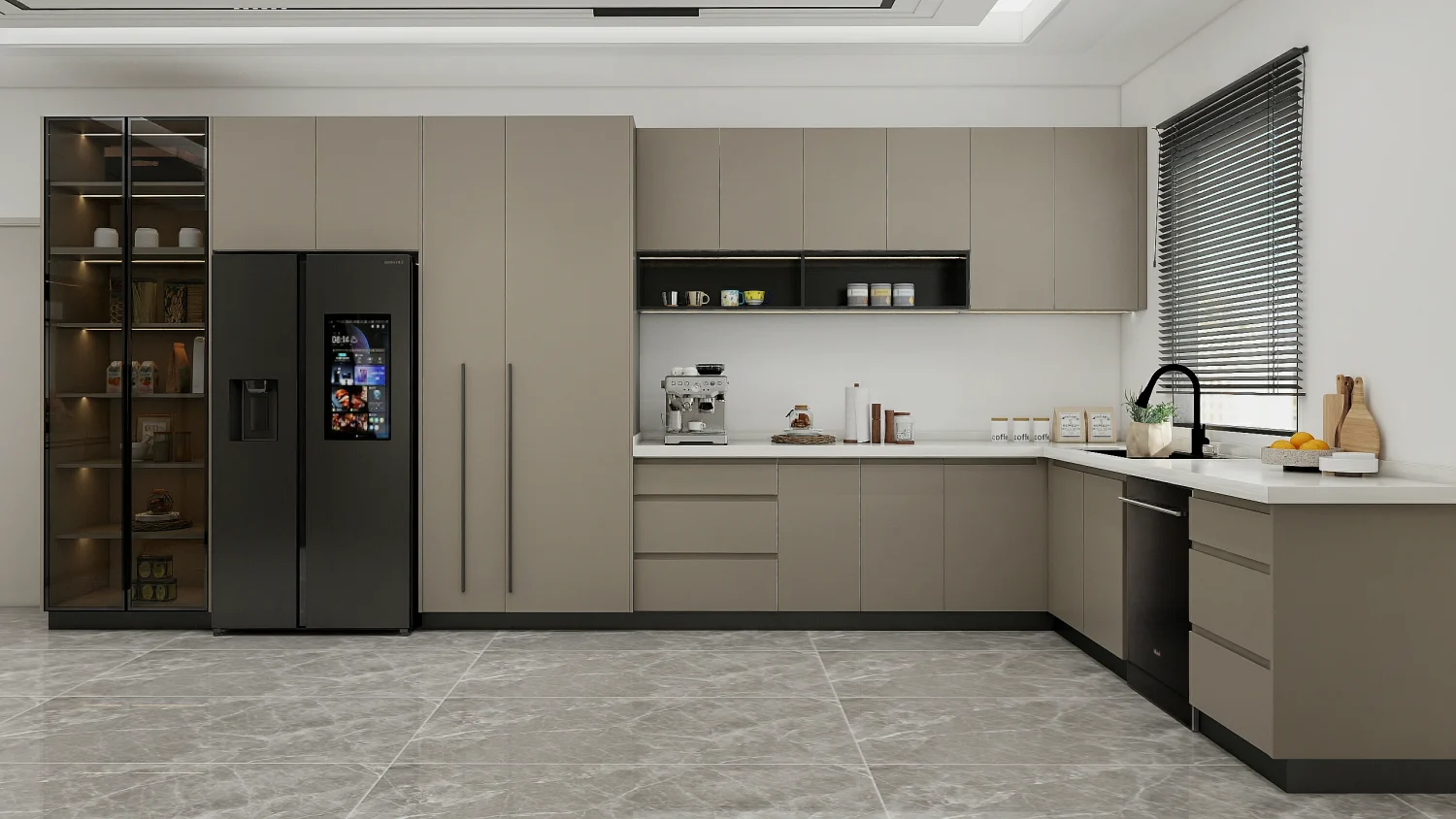
Cost-Effectiveness
One of the most significant advantages of laminate cabinets is their affordability. Compared to solid wood, metal, or high-end materials, laminate offers an inexpensive alternative without compromising on the overall design. But why is laminate so affordable?
Less expensive raw materials: Laminate is made from synthetic materials, which are far cheaper than solid wood or other premium options.
Simpler manufacturing process: Laminate production involves layering paper or vinyl over a substrate, which is a much faster and more cost-efficient process than crafting solid wood cabinets.
Easier installation: Laminate cabinets are lightweight and easier to install compared to heavier materials, which reduces labor costs.
For those working within a tight budget, laminate cabinets present a practical and affordable way to refresh a kitchen without sacrificing design.
Durability and Resistance
Despite being more affordable, laminate cabinets are surprisingly durable. The manufacturing process creates a hard, resilient surface that can withstand the wear and tear of daily kitchen use. The durability of laminate is especially noticeable in these key areas:
Scratch resistance: The outer layer of laminate is designed to resist scratches and scuffs, making it ideal for high-traffic areas where cabinet surfaces are prone to damage.
Stain resistance: Many laminate finishes are resistant to common kitchen stains, such as grease, coffee, and food spills. This makes cleanup quicker and easier.
Moisture resistance: Unlike wood, which can warp or swell when exposed to moisture, laminate cabinets are less susceptible to damage caused by humidity, spills, and cleaning products. This is especially important in kitchens where moisture levels fluctuate.
These durability features make laminate a practical choice for busy households, particularly those with children, pets, or high-traffic kitchens.
Low Maintenance Requirements
Laminate cabinets are incredibly low-maintenance compared to other materials like wood. While wood cabinets may require periodic refinishing or sealing, laminate cabinets need very little upkeep. Here’s why laminate’s maintenance is a breeze:
Simple Cleaning: Laminate’s smooth surface is easy to wipe clean with a damp cloth or a quick dusting.
Stain Resistance: Laminate resists most stains, and tougher spots can be cleaned with mild non-abrasive cleaners.
Hygienic: The non-porous surface resists bacteria, keeping your kitchen clean and sanitary.
If you want a cabinet option that’s easy to care for, laminate is an excellent choice.
Wide Range of Design Options
Laminate kitchen cabinets are available in a variety of styles, colors, and textures, offering great flexibility for design. Here’s why it’s a top choice:
Mimic High-End Materials: Laminate can resemble expensive materials like wood, stone, or metals, providing a premium look without the cost.
Variety of Finishes: Laminate comes in matte, glossy, or textured finishes and a wide range of colors to match your kitchen’s décor.
Customizable Looks: Laminate can be printed with various patterns and colors, allowing you to achieve your desired style at an affordable price.

What Are the Common Disadvantages of Laminate Cabinets?
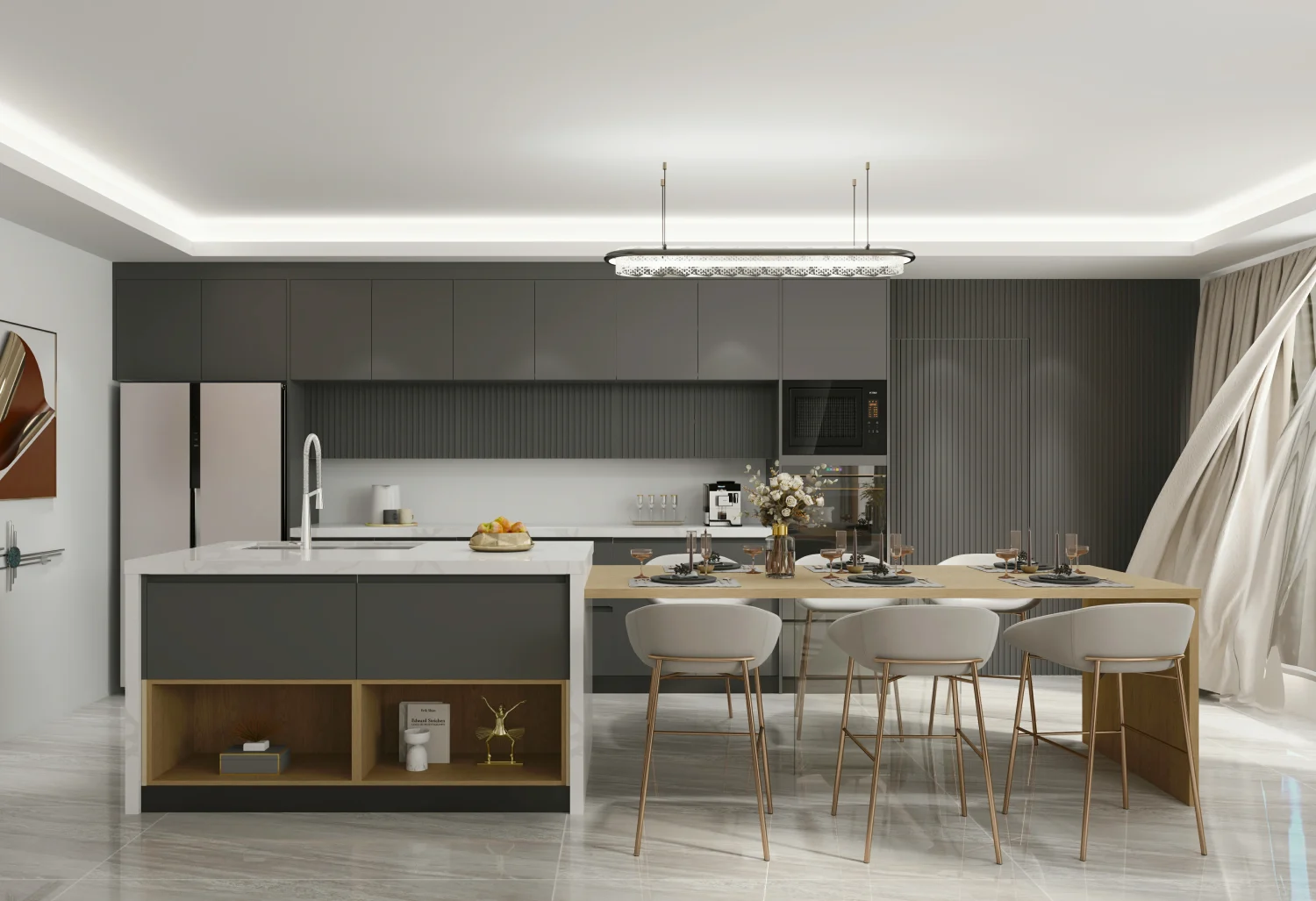
Repair Challenges
While laminate is durable, it has one significant drawback: repairs can be challenging. Unlike solid wood, which can be sanded, refinished, or repaired with fillers, laminate typically cannot be fixed once damaged. Here’s why:
Permanent Surface Damage: Scratches or chips often require panel replacement, as laminate can’t be refinished like wood.
Limited Customization: Once installed, laminate can’t be easily altered, unlike wood which can be modified over time.
While laminate is durable, its inability to be repaired may concern some homeowners.
Heat Sensitivity
Laminate cabinets, while durable, can be sensitive to extreme heat. High temperatures, such as those from hot pots or pans, can cause damage over time. Here’s why heat is an issue:
Warpage and Discoloration: Prolonged exposure to heat can cause laminate to warp, peel, or discolor. If hot cookware is placed directly on the surface, the heat can compromise the material’s integrity.
Limitation Near Cooking Areas: Laminate is best suited for areas away from direct heat sources. If your kitchen involves heavy cooking with frequent exposure to high heat, laminate may not be the most durable choice.
Limited Customization
While laminate offers a wide variety of designs, it has its limitations when it comes to personalization. Unlike wood, which can be stained or painted to match changing tastes, laminate is a more permanent option:
No Painting or Staining: You cannot paint or stain laminate surfaces once they are installed. This makes it less versatile for homeowners who want to change the look of their cabinets over time.
Less Flexibility in Design Alterations: While laminate is available in many colors and finishes, it doesn’t offer the same ability to be altered or modified like wood does. If you want to change the design down the line, you’ll often need to replace the laminate panels.
Potential Delamination
Delamination occurs when the laminate begins to peel away from the substrate beneath it. This can happen due to prolonged exposure to moisture or poor-quality materials. While it’s not a common issue, it’s important to keep the following in mind:
Moisture Exposure: Excess moisture can cause the laminate to separate from the base material, resulting in bubbles or peeling surfaces.
Quality Control: Low-quality laminate is more likely to suffer from delamination, so it’s important to invest in higher-grade materials that are designed to last longer.
How Do Laminate Cabinets Compare to Other Materials?

Laminate vs. Wood
| Aspect | Laminate | Wood |
|---|---|---|
| Cost | Lower cost, budget-friendly | Higher cost due to solid wood |
| Maintenance | Low maintenance, easy to clean | Requires staining, sealing, and refinishing |
| Longevity | Lasts around 10–15 years with proper care | Lasts much longer, can be refinished |
| Durability | Moderately durable, prone to heat damage | Highly durable, ages well with time |
| Moisture Resistance | Resistant to moisture but can be sensitive to heat | Prone to moisture damage, may warp or swell |
Laminate vs. Thermofoil
| Aspect | Laminate | Thermofoil |
|---|---|---|
| Cost | Affordable, budget-friendly | Slightly more expensive than laminate but still affordable |
| Maintenance | Low maintenance, easy to clean | Low maintenance but can discolor over time |
| Durability | Durable but prone to heat damage | Less durable than laminate, prone to heat damage |
| Design Variety | Offers a wider range of colors, textures, and finishes | Limited in design options compared to laminate |
| Heat Resistance | Sensitive to heat, can warp or discolor | More susceptible to heat damage |
Laminate vs. Melamine
| Aspect | Laminate | Melamine |
|---|---|---|
| Cost | Affordable, budget-friendly | Slightly cheaper than laminate |
| Maintenance | Low maintenance, easy to clean | Easy to clean, more prone to scratches |
| Durability | Durable, resistant to scratches, stains, and moisture | Less durable, more easily damaged by impact or heat |
| Design Variety | Wide range of designs, colors, and finishes | Fewer design options than laminate |
| Moisture Resistance | Resistant to moisture and easy to maintain | Performs well in dry areas, less moisture resistant |
What Factors Should You Consider Before Choosing Laminate Cabinets?
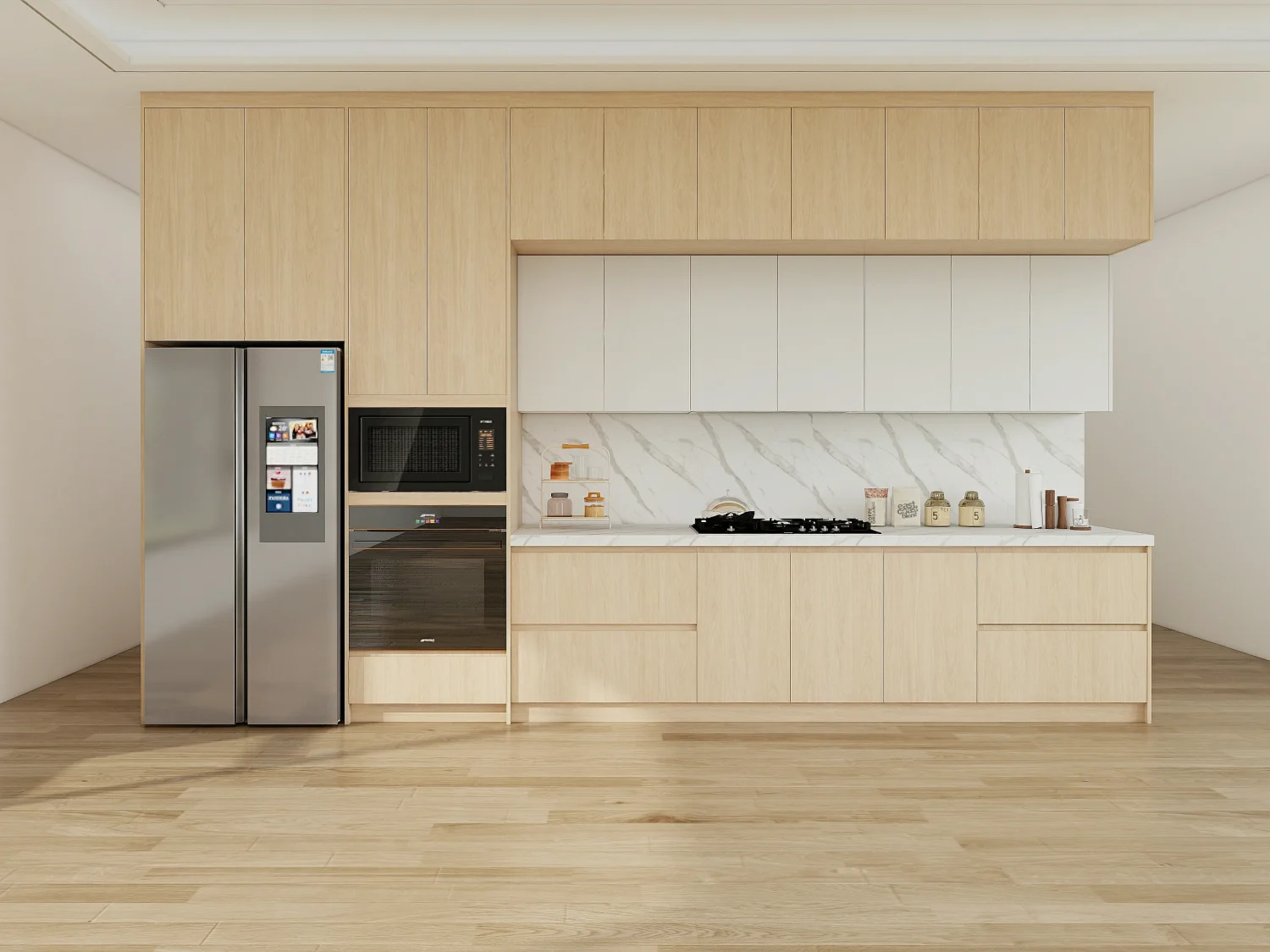
Budget Constraints
If you’re working with a budget, laminate is a smart choice. It offers a stylish look at a fraction of the cost of materials like wood or metal. You can achieve the appearance of high-end finishes without the hefty price tag, freeing up funds for other aspects of your kitchen renovation.
Kitchen Environment
Consider the moisture and heat levels in your kitchen. Laminate excels in kitchens with moderate humidity and typical heat exposure, but in spaces with excessive moisture or high heat, like near stoves or dishwashers, it may not perform as well. Ensure your kitchen environment suits the durability of laminate.
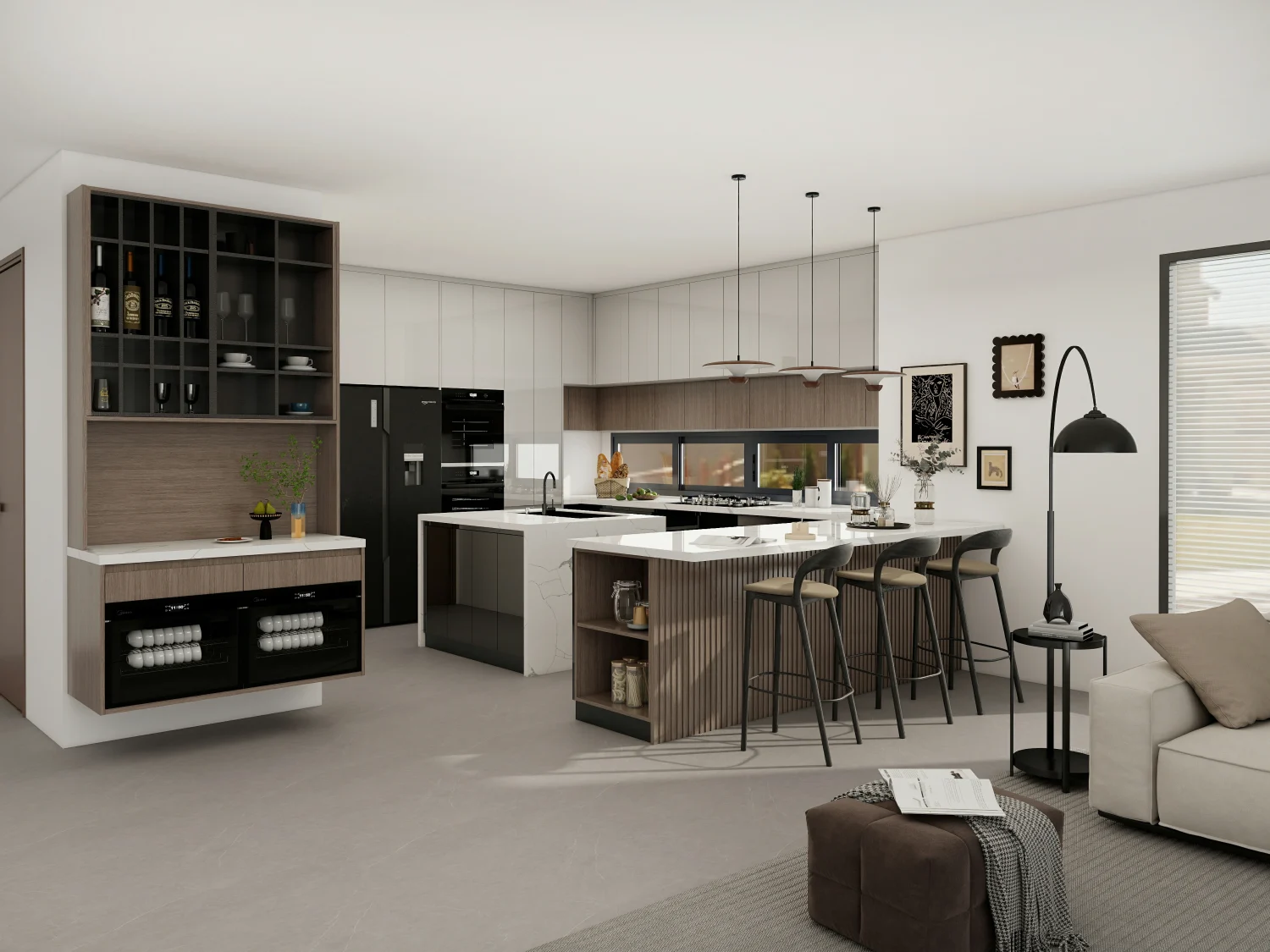
Aesthetic Preferences
Laminate offers versatility with an extensive range of colors and finishes, including designs that replicate wood or stone. However, if you desire a fully customized or luxurious look, laminate may fall short compared to solid wood or bespoke materials, which offer more depth and long-lasting appeal.
Longevity Expectations
While laminate is durable, it doesn’t have the same lifespan as solid wood or metal cabinets. You can expect laminate to last 10–15 years with proper care. If you’re seeking a material that ages beautifully and lasts longer, solid wood might be a better long-term investment.
Conclusion
Laminate kitchen cabinets provide an affordable, durable, and low-maintenance option for homeowners seeking a stylish yet budget-friendly kitchen upgrade. They offer a wide range of designs and finishes, making them a great choice for virtually any style. However, they do come with some downsides, such as repair challenges and heat sensitivity.
If laminate fits your needs and budget, it can be a fantastic solution for creating a beautiful and functional kitchen without the high costs associated with solid wood or other premium materials.
Ready to transform your kitchen with laminate cabinets? Contact us today to explore our wide range of designs and find the perfect fit for your space!
FAQs
Yes, laminate cabinets are durable and resistant to scratches, stains, and moisture. However, they can be sensitive to heat, so it’s important to protect them from direct exposure to hot items to avoid warping or discoloration.
Laminate kitchen cabinets typically last between 10 to 15 years with proper care and maintenance. Their lifespan may be shorter in high-traffic kitchens but can still offer reliable performance for many years.
Laminate cabinets are easy to maintain. Regular cleaning with a soft cloth and mild cleaner is all that’s needed. Avoid using abrasive materials or harsh chemicals to preserve their surface and finish.
Yes, fluted kitchen cabinets are highly versatile and can fit into modern kitchen designs. The sleek lines and textured surface of fluted cabinets can add a sophisticated, contemporary touch. They work particularly well with minimalist or neutral design elements, providing subtle contrast without overwhelming the space.
Laminate cabinets are more affordable and easier to maintain than wood. While wood offers a timeless appeal and better repairability, laminate provides a similar look at a lower price, making it ideal for budget-conscious homeowners.

